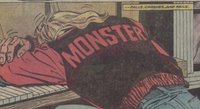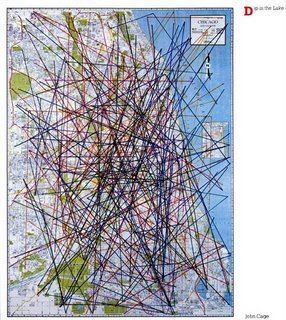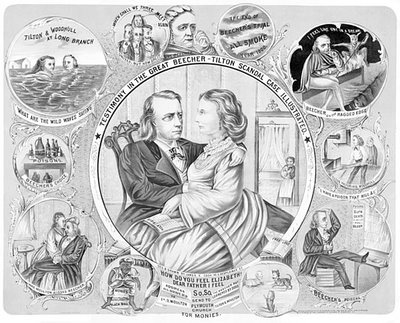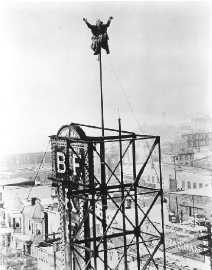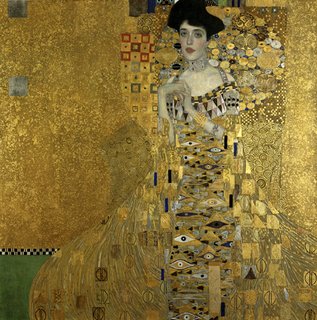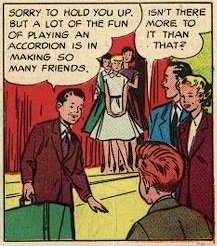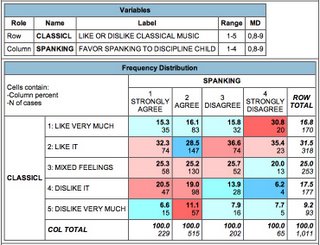
Schoenberg:
Moses und AronBoston Symphony Orchestra / Levine
October 28, 2006
I think
Moses und Aron might be one of those rare pieces of music that absolutely has to be experienced live. It hasn’t been well-served by recordings; the few extant examples, for all their skill and conviction, come off like interesting experiments, spare-no-expense 12-tone concept albums that inspire, at best, polite admiration. But to hear it in person, as a near-capacity crowd did last Saturday, with James Levine conducting the Boston Symphony and an accompanying mob, is to be swept up in its inexorable force. It’s the operatic equivalent of a David Lean movie: a thrilling intellectual drama played out on the grandest possible stage. And like David Lean movies, you need to see it on the big screen.
Here’s an example. In the opening scene, Schoenberg’s orchestration of the voice of God has been much remarked upon: six solo voices, spread throughout and doubled by the orchestra, and a chorus of men and boys, speaking against the voices’ singing, declaim God’s words in counterpoint with each other. On paper, it’s studiedly unconventional; on record, funneled into two-channel stereo, it’s a diverting babble. In performance, it so arrestingly puts the listener into Moses’ shoes that it’s uncanny. Words drift into perception like wind gusts, from every direction at once, a swirl of command on the edge of comprehension. And when the scene shifts to the wasteland, where Moses enlists his brother Aron in his mission, Schoenberg suddenly drops the instrumentation to a solo flute, a solo violin, and a couple of horns, in quiet but uneasy counterpoint: an empty landscape, crackling with tension. The microphone flattens it into merely an interesting choice. But to physically experience the sudden stage distance between the component sounds is magical.
The Sunday school version of the relationship between Moses, the lawgiver, and Aron, the communicator, is one of fortuitous complementarity, a Hebrew Bobby and Jack Kennedy. Schoenberg’s dramatic masterstroke was to make them antagonists. Moses understands the “idea” but can’t express it; Aron tries to express what he can’t understand. And each resents their dependence on the other. As Moses, John Tomlinson was as a man possessed, an implacable pillar gripped by a deathly fear of cracks. His
Sprechstimme veered closer to singing than most, giving the impression of someone whose voice has been appropriated by another, racked by thunderous words that suddenly, haltingly spill out.
Philip Langridge’s performance as Aron was so finely shaded and paced that he inadvertently pointed up the one dramatic flaw I sense in Schoenberg’s design: the ease with which the crowd intimidates Aron at the opening of Act II. In the first half, Langridge carefully and slyly traced the degrees by which Aron’s confidence (and pleasure) grows as his oratorical sway over the crowd takes hold. In scene 4, the way his voice dropped to a stage whisper on the words “
Schließet die Augen, verstopfet die Ohren” (“close your eyes, and stop your ears”) was seductive and sinister, not inappropriately reminiscent of the emcee in
Cabaret. By the end of the act, he had Israel eating out of his hand, which made all the more jarring his sudden Act II acquiescence to the crowd’s demands for an idol. Maybe it’s supposed to be that way: one of the recurring themes of the opera is the frightening unpredictability of the mob.
The mob took a while to come into focus. The biggest casualty of a concert, as opposed to a staged, performance of
Moses is the protean character of the chorus. In their first big scene, rumors of possible liberation race through the people, factions form and dissolve, and conventional wisdoms are settled upon and then cast aside. With the chorus a massed block at the back of the stage, Schoenberg’s careful delineation of the desperation and fickleness of each requisite group was largely a wash. Hearing the Tanglewood Festival Chorus this past summer in Schoenberg’s
Gurrelieder, my sense was that they were struggling to adjust to Levine’s minimalist, undemonstrative conducting style. That uncertainty seemed evident in the first act of
Moses as well; thrilling sounds (particularly from the women) were in abundance, but so were lagging tempi and blurry rhythms. But a few minutes into Act II, everything clicked into place, and the chorus suddenly began to peal forth. Their cry of “
Juble, Israel” (“Rejoice, Israel”) at the initial appearance of the Golden Calf was filled with a sure beauty as well as a chilling fanaticism.
Schoenberg’s portrayal of public opinion in
Moses und Aron walks a fine line between spontaneous joy and calculated agitation. This performance tended toward the latter, creating unmistakable echoes of Schoenberg’s own experience in Nazi Germany, not to mention nervously contemporary accents. When one of the Israelites (Sanford Sylvan, deftly handling multiple supporting roles) exhorted the crowd, “
Alles für die Freiheit!… Erschlagt die Fronvögte!” (“All for freedom! Kill the taskmasters!”), the tone was less hope for the future than the clipped certainty of an experienced demagogue; it gave the immediate agreement of the old priest (the magisterial Sergei Koptchak) an uneasy air of self-preservation. The projected translations made the most of the political overtones. When Aron changes Moses’ staff into a serpent, the crowd is suddenly in its power, and they sing what they’re commanded to do. “
Kommt hierher, geht dorthin,” they cry. “Come here; go there.” This was wittily rendered as “move to the left” and “move to the right,” making explicit the ideological promiscuity of the mob.
One common way to hear
Moses is in the light of Schoenberg’s own aesthetics. In this interpretation, Aron represents “accessible” art while Moses remains uncompromisingly focused on the “idea.” There’s undoubtedly something to this: when Aron tries to explain to the crowd, “
Erwartet die Form nicht vor dem Gedanken” (“You cannot have form before idea”) it’s almost as if he’s giving them a masterclass in composition. But Schoenberg complicates the issue by not picking sides; both Moses and Aron are equally flawed and stubborn. When Moses comes down off the mountain to find the orgy around the Golden Calf, the expectation of a righteous, old-testament smackdown is palpable. But the speed with which Schoenberg has Aron turn on his brother, unleashing a full arsenal of guilt, rationalization, and lethal reasonableness, catches both Moses and the listener off guard. Moses
is maddening and impractical; if Aron compromises in the short term, what’s the harm, as long as the ultimate goal remains the same? Schoenberg never pretends to have the answer—that thorny uncertainty is the dramatic engine of the piece.
At the end of Act II, Moses is a defeated man; Schoenberg never finished Act III, in which Moses would have brought Aron to justice for his idolatrous transgressions. It makes for a more pessimistic ending, but a more human one. Most commentators think that Schoenberg ultimately decided that Act III was beyond music, but it’s just as possible that the ending we have had more resonance for Schoenberg, exiled in a populist wasteland, struggling to write, a lost and confused prophet. Schoenberg died having heard the bulk of
Moses und Aron only in his head. I haven't mentioned the Boston Symphony itself yet; after Saturday night’s performance, the best compliment I can give the players is that, no doubt, the orchestra Schoenberg must have heard probably sounded a lot like them.




